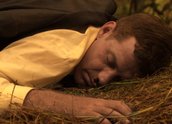

Who Killed Dr Bogle and Mrs Chandler? (2006)
Synopsis
Who Killed Dr Bogle and Mrs Chandler retraces the investigation into the deaths of brilliant CSIRO scientist Dr Bogle and his lover, Mrs Margaret Chandler, whose bodies were found beside the Lane Cove River, NSW in 1963. Suspicion fell on Margaret’s husband Geoffrey Chandler but neither the detectives, nor the forensic team, were ever able to make an arrest. A coronial inquest collapsed with no findings.
For 40 years their deaths remained one of the world’s greatest forensic mysteries until filmmaker Peter Butt made this documentary. Through painstaking research and dramatic storytelling, Butt follows the twists and turns of the investigation into the deaths, both before the bodies were found and after. Combining interviews with suspects, detectives, toxicologists and journalists with a narration by Hugo Weaving, the documentary recreates the investigation surrounding their deaths. Finally the film presents its own answer to the mystery of who killed Dr Bogle and Mrs Chandler.
Curator’s notes
From the pre-title sequence to the end credits Who Killed Dr Bogle and Mrs Chandler is a beautifully crafted documentary in the classic mode of a ‘whodunnit’. Like all great crime movies it starts with dead bodies. Only in this case it is a true crime which has haunted Australia for over four decades. Detectives, a coronial inquest and forensics have been unable to solve it, however this documentary may have put the mystery to rest (see clip one).
But the film is more than just solving a mystery: it is an investigation into a time of strict moral standards in Australia which gave the atmosphere around the case a sensational edge. The discovery of a handsome married CSIRO scientist lying naked with the young beautiful wife of his colleague, both dead, in the early hours of New Year’s Day led to endless gossip and speculation. The media coverage only fuelled the rumours.
Geoffrey Chandler, the dead woman’s husband, was considered the main suspect by police, the media and the public. The interview with him is at the heart of the documentary and shows the human cost of trial by media. There was never any evidence to suggest he was involved other than the fact that he was also having an affair and seemed to condone his wife’s flirtation with Dr Bogle on the night. But sex, murder and death sell newspapers (see clip two).
From the first few bars it is the music, composed by Guy Gross, that sets the scene. There is a haunting quality to it that works with the stylised slow-motion re-creations and a narration by Hugo Weaving that leads us on, promising to disclose intimate personal details about the characters and unknown facts about the case. We are seduced by the film into the mystery itself and intrigued by the storytellers as they recount what happened at the time and the part they played in it. As the detectives, scientists and journalists recall their actual experiences, the film cuts to re-creations and historic footage from the time. The period details and the performances by actors in the dramatised sequences used to illustrate these accounts are extremely impressive.
Each scene leads us to the next with tantalising new information. As in all good crime stories we are continually wondering: who did it? All credit should go to the filmmakers in this regard: Peter Butt for his painstaking research and direction, Kris Wyld for her producing and knowledge of the genre (Wyld was part of the team that created the ABC series Wildside, 1997-99) and editor Denise Haslem.
Paradoxically, for me the greatest let-down of the film was also its greatest success: the fact that Butt seems to have cracked the case. According to the film, the murder wasn’t fuelled by jealousy or revenge, or a CIA conspiracy, or a cover-up of police bungling, or lost forensic samples. In fact, in the last ten minutes, the film deviates from the crime fiction genre and delivers a documentary-style ‘truth’, allowing the main players interviewed in the film to finally close the book on it.
These new facts served as the hook for the marketing of the film when it first screened on ABC1 on 7 September 2006. The documentary topped the ratings as Australians tuned in to finally get the answer to a 40-year-old mystery. Key awards for the film include: Most Outstanding Documentary at the 2007 TV Week Logie Awards; Best Local Documentary in the 2006 Sydney Morning Herald Couch Potato Awards; and finalist in the documentary category at the 2007 Sydney Film Festival Dendy Awards.
- Overview
- Curator’s notes
- Video 2 clips
- Principal credits
- Find a copy
- Make a comment
- Map
- Add your review



